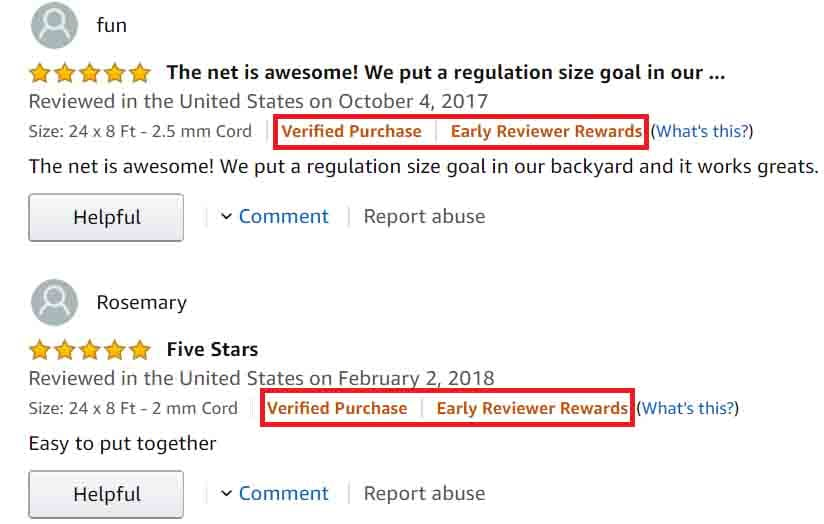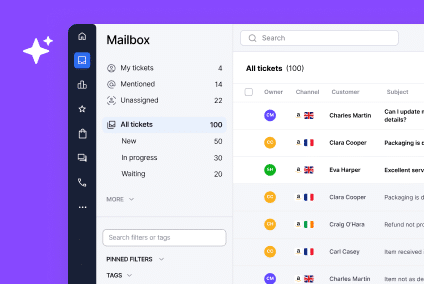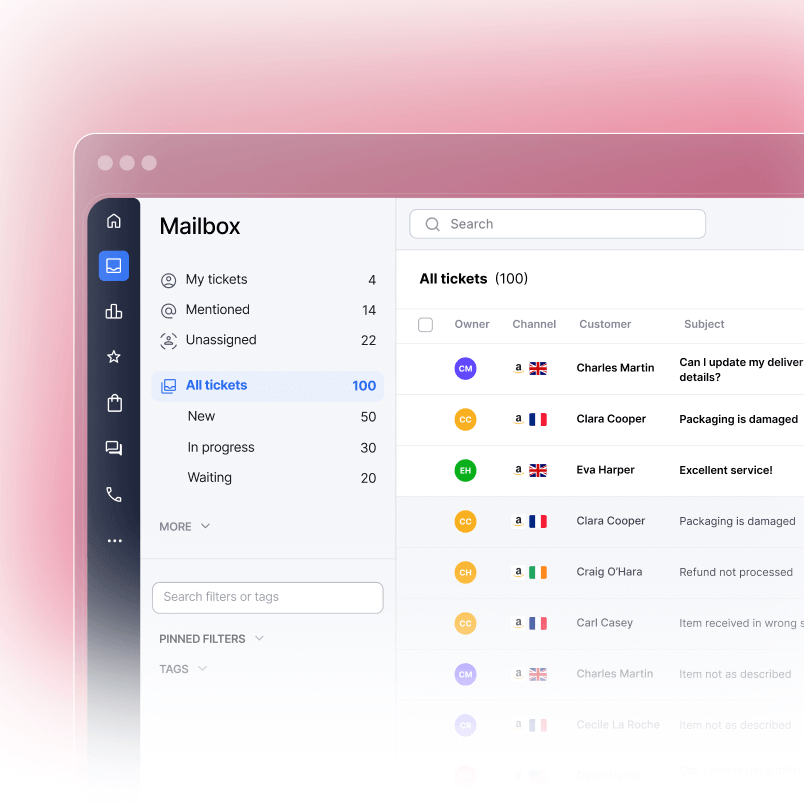Reviews are vital for Amazon sellers. They provide your potential customers with assurance that you’re a reputable seller and are a critical component of winning the Amazon Buy Box.
But for sellers launching a new product, this poses a significant challenge. You need sales to receive reviews, and you need reviews to drive sales. It’s a vicious cycle!
Amazon no longer allows sellers to offer rewards in exchange for reviews. The Amazon Early Reviewer Program was once available to help with this challenge, but important changes have occurred. Let’s explore what this program was, its current status, and alternatives available in 2025.
What Was the Amazon Early Reviewer Program?
The Amazon Early Reviewer Program was designed to help sellers gain feedback for new products on the marketplace. Amazon would email customers offering a small gift voucher in return for a review of your product.
First, let’s rewind a bit to uncover how and why the program was launched.
In 2016, Amazon received negative press because of fake reviews on its site. The eCommerce giant responded decisively. Amazon removed any fake or incentivized reviews it encountered. It also introduced a strict new customer review policy banning sellers from offering discounts or any other incentives in exchange for positive feedback.
The new rules also banned reviews from family, friends, or third-party services. Ignoring these policies puts a seller at risk of account suspension.
Since then, trust in Amazon reviews has skyrocketed, with only 6.2% of US shoppers saying they don’t trust the site’s reviews at all.
However, without incentives, sellers were struggling to build up reviews for newly launched products. So, in 2018, the Amazon reviewer program was set up to help them earn authentic, trustworthy reviews – for a fee.
Although sellers could no longer offer rewards in exchange for reviews, Amazon could do it for them.
How Did the Amazon Early Reviewer Program Work?
Signing up to the reviewer program cost $60 per SKU. Amazon then followed up with customers who bought this product, asking them for an honest review of their experience.
They offered customers an Amazon gift card worth between $1 and $3 as a reward for their feedback, even if it was negative.
The program wasn’t intended to drive sales, so customers weren’t aware of the potential reward when making a purchase. Besides, Amazon didn’t send review requests to everyone. Only a random selection of customers were invited to take part.
Any customer was eligible once they didn’t have a past record of posting dishonest or abusive reviews.
Feedback gathered through the program was marked with an orange label, as well as a ‘verified purchase’ tag. This told other shoppers that the review was genuine and trustworthy.

The reviewer program was designed as a launching pad for new products. For this reason, it was only available for items with very few reviews. Amazon would keep requesting feedback for your product over the course of a year or until you received five reviews, whichever came first.
Any reviews which weren’t collected as part of the program wouldn’t count towards this figure.
Who Was Eligible for the Amazon Early Reviewer Program?
To register a product in the program, you needed to be its brand owner. In other words, you needed to own the trademark to the brand name which appeared on the product or packaging.
If you were the brand owner, you needed to sign up to the Amazon Brand Registry. Then, to qualify for the Amazon Early Reviewer program, your products also needed to meet the following criteria:
- The product had to be on Amazon.com or Amazon.co.uk
- The product needed to have fewer than five reviews to date
- It must have cost at least $15 – if the price fell below this figure while it was enrolled in the program, Amazon would stop requesting reviews
- It should have had a stand-alone or parent SKU – child SKUs were automatically enrolled with a parent SKU
Important Update: Program Discontinuation
As of March 10, 2021, Amazon stopped accepting new enrollments in the Early Reviewer Program, and the service was completely discontinued on April 25, 2021.
In their announcement, Amazon stated that they had “made numerous improvements to encourage buyers to review products on Amazon. These initiatives, such as One Tap Reviews and Global Review Sharing, have proven more effective in generating reviews than the Early Reviewer Program.”
Is the Amazon Vine Program a Good Alternative?
With the discontinuation of the Early Reviewer Program, many sellers are now turning to the Amazon Vine Program as an alternative for obtaining those crucial initial reviews.
The Amazon Vine Program invites the most trusted and reliable reviewers on Amazon (known as “Vine Voices”) to post opinions about new and pre-release products. These reviewers receive products for free from participating vendors and sellers.
2025 Amazon Vine Program Updates
Amazon’s Vine Program received a major update in 2025, allowing sellers to get Vine reviews before their product launch, as of June 2025. This means sellers can now launch with up to 30 authentic reviews on Day 1, providing immediate social proof and boosting visibility right from the start.
Here’s how the Vine Program compares to the former Early Reviewer Program:
Eligibility: Only available to brand-registered sellers with products in FBA
Cost: Amazon now charges based on the number of units enrolled: 1-2 units are free, 3-10 units cost $75, and 11-30 units cost $200
Reviewer Quality: Vine reviewers are often more experienced and provide more detailed reviews
Review Quantity: You can potentially receive up to 30 reviews through Vine (compared to 5 with the Early Reviewer Program)
Review Speed: Reviews often appear faster through Vine, and with the 2025 update, reviews can now be posted before the product goes live
Expanded Access: The 2025 update also expands Vine access to authorized resellers enrolled in Brand Registry, opening opportunities for more sellers beyond just brand owners
To avoid review manipulation on Amazon, it’s important to follow Amazon’s guidelines and use only approved methods for obtaining reviews.
What Other Options Do Sellers Have in 2025?
The discontinuation of the Amazon Early Reviewer Program doesn’t mean sellers are left without options. Here are some legitimate ways to generate product reviews:
- Request a Review Button: Amazon provides a “Request a Review” button in Seller Central that allows you to send a standardized email to buyers asking for a review.
- Follow-up Emails: Those who don’t use Fulfillment By Amazon (FBA) can add inserts to their packages requesting feedback. To stay within the rules, these must be worded neutrally and only call for honest reviews.
- Product Inserts: You can include product inserts that ask for honest feedback (but never incentivize positive reviews).
- Provide Excellent Customer Service: Top-class customer service is key to nurturing great reviews, as is taking the time to create accurate and descriptive Amazon product listings.
- Use Free Amazon Product Review Request Templates: These can help you craft appropriate messages that comply with Amazon’s policies. Check out our free Amazon product review request template to get started.
- Leverage Customer Support Tools: Using comprehensive customer service tools can help you provide exceptional support that naturally leads to positive reviews.
- Master Amazon SEO: Optimizing your listings with proper Amazon keyword optimization helps attract the right customers who are more likely to leave positive reviews.
Understanding the Importance of Reviews
Remember, there’s a very clear correlation between reviews and sales. So the more you have, the more comfortable people will feel buying from you.
It’s crucial to understand the difference between Amazon product reviews vs. seller feedback when developing your strategy.
Studies show that 70% of shoppers rely on reviews before making a purchase, making authentic reviews essential for your Amazon success. With proper review management and AI-powered customer support tools, you can create a systematic approach to earning genuine feedback.
How to Generate Amazon Reviews in 2025
While the Amazon reviews program in the form of the Early Reviewer Program is no longer available, sellers now have other powerful options to generate those crucial initial reviews. The Amazon Vine Program offers a structured approach for brand-registered sellers, while other strategies like request buttons and follow-up emails provide alternatives for all sellers.
Advanced Review Management Strategies
Automated Review Requests: Implement automated systems to request Amazon product reviews at optimal times after purchase.
Customer Support Excellence: Focus on providing exceptional customer service that naturally encourages positive feedback.
Review Monitoring: Use tools to monitor your reviews and respond quickly to any issues. Learn how to remove negative product reviews on Amazon when appropriate.
Multi-Channel Approach: Don’t just focus on Amazon – implement comprehensive customer feedback templates across all your sales channels.
The key to success remains providing excellent products and customer service. By focusing on quality and following Amazon’s guidelines, you can continue to get more reviews on Amazon in 2025 and beyond.
Remember that authentic, honest reviews are the most valuable for long-term success. Focus on delighting your customers with superior products and outstanding eCommerce customer support, and the positive reviews will follow naturally.
With the right strategy, tools like eDesk’s comprehensive customer service platform, and a commitment to excellence, you can build a robust review profile that drives sales and builds customer trust in 2025 and beyond.
Book a free demo today to learn more about how eDesk can optimize your use of the Amazon Early Reviewer Program.




